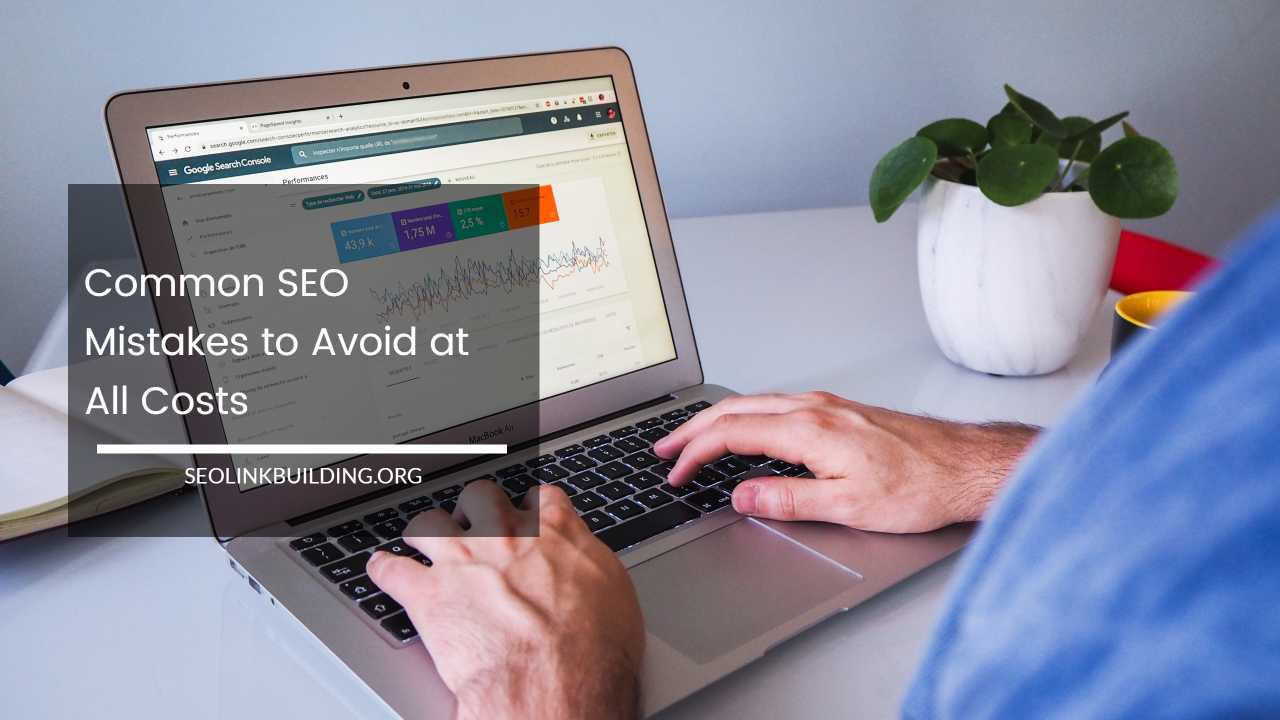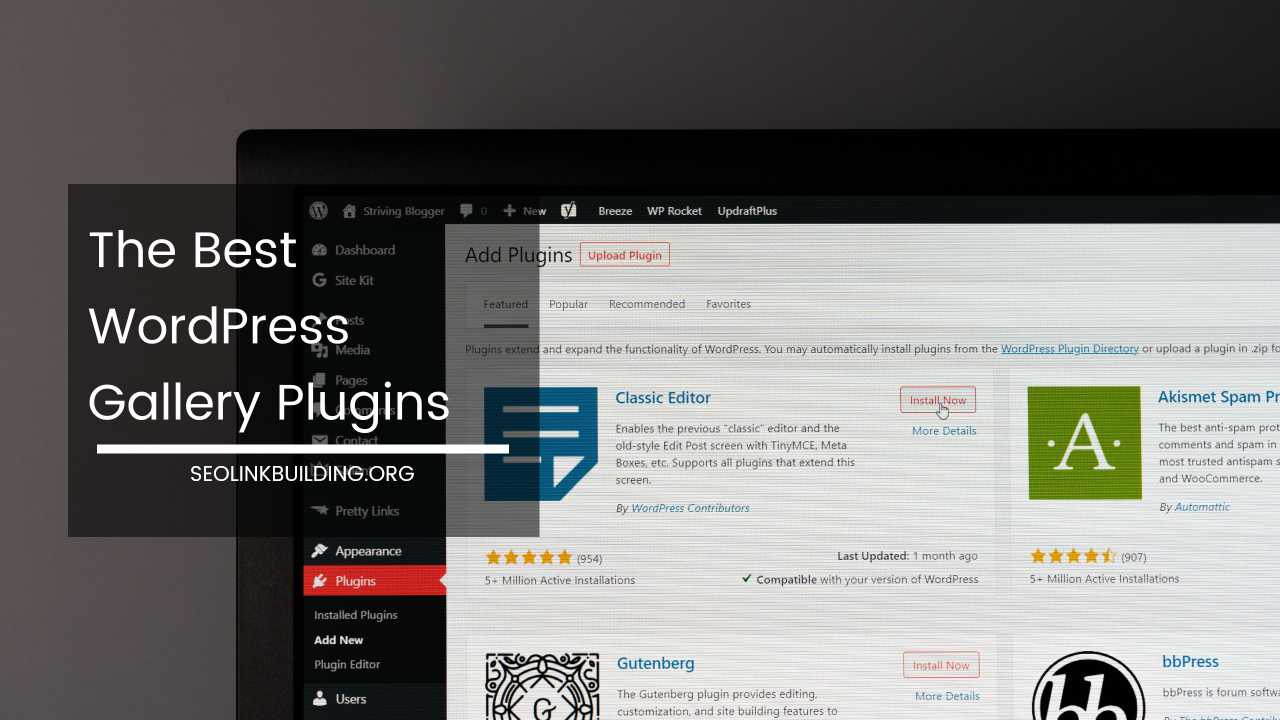Common SEO Mistakes to Avoid at All Costs

SEO Mistakes
Search Engine Optimization (SEO) is a fundamental aspect of digital marketing that can significantly impact a website’s visibility and success.
When done right, SEO can drive organic traffic, improve search engine rankings, and boost online presence.
However, there are numerous pitfalls that website owners and marketers can fall into, which can hinder their SEO efforts and even lead to penalties from search engines.
In this comprehensive guide, we will delve deeper into the most common SEO mistakes to avoid at all costs to ensure your website ranks well and achieves its online goals.
1. Neglecting Keyword Research
Keyword research is the foundation of any successful SEO strategy. Failing to conduct thorough keyword research can lead to targeting the wrong keywords or phrases that have little to no search volume.
To avoid this mistake, invest time in researching relevant keywords for your industry and niche. Tools like Google Keyword Planner, SEMrush, and Ahrefs can help identify high-value keywords with reasonable competition.
When conducting keyword research, consider the following factors:
- Relevance: Are the keywords directly related to your content and audience?
- Search Volume: How many people are searching for these keywords each month?
- Competition: How difficult is it to rank for these keywords?
- Long-Tail Keywords: These are longer, more specific keyword phrases that can be easier to rank for and often convert better.
By conducting comprehensive keyword research, you can create content that not only targets the right audience but also has the potential to rank higher in search engine results pages (SERPs).
2. Ignoring On-Page SEO
On-page SEO encompasses optimizing individual web pages to improve their search engine rankings. This includes optimizing meta titles, meta descriptions, header tags, and content.
Neglecting on-page SEO elements can result in missed opportunities for ranking higher in search results.
Make sure to include your target keywords naturally within your content and meta tags while maintaining a user-friendly and engaging experience.
Here are some critical on-page SEO elements to consider:
Meta Titles and Descriptions
- Craft compelling meta titles (around 60 characters) and meta descriptions (around 160 characters) that accurately represent the content of your page and include your target keywords.
- Ensure uniqueness in titles and descriptions across your website to avoid confusion in SERPs.
Header Tags
- Use header tags (H1, H2, H3, etc.) to structure your content logically. The H1 tag should typically contain your main keyword and represent the main topic of the page.
- Use header tags to break up content into digestible sections, making it easier for readers to navigate.
Content Optimization
- Incorporate relevant keywords naturally within your content. Avoid keyword stuffing, which can result in penalties.
- Write high-quality, informative content that addresses the needs and interests of your target audience.
- Include multimedia elements like images and videos to enhance user engagement.
3. Overlooking Mobile Optimization
With the increasing use of smartphones, mobile optimization is crucial. Google now prioritizes mobile-friendly websites in its search results.
If your site isn’t optimized for mobile devices, you risk losing a significant portion of your potential audience and SEO rankings. Ensure that your website is responsive and provides a seamless experience across all screen sizes.
Mobile optimization strategies include:
- Using responsive web design to adapt to various screen sizes and orientations.
- Reducing page load times, as mobile users tend to have less patience for slow-loading pages.
- Optimizing touch elements, such as buttons and links, for easy navigation on mobile devices.
4. Slow Loading Speed
A slow-loading website can harm both user experience and SEO rankings. Search engines favor fast-loading sites because they provide a better user experience.
Compress images, use browser caching, and choose a reliable hosting provider to improve your website’s loading speed. Tools like Google PageSpeed Insights can help identify and address speed-related issues.
Additional tips to improve website loading speed:
- Minimize HTTP requests by reducing the number of elements on a page.
- Use Content Delivery Networks (CDNs) to distribute website content and reduce server response times.
- Optimize code, such as HTML, CSS, and JavaScript, to reduce file sizes and increase load speed.
5. Neglecting Quality Content
Content is king in the world of SEO. Creating high-quality, informative, and engaging content should be a top priority.
Many website owners make the mistake of prioritizing keyword stuffing over providing valuable information to their audience.
This approach not only turns off users but can also lead to penalties from search engines. Focus on creating content that answers questions, solves problems, and engages your target audience.
Here are some strategies for creating quality content:
- Conduct in-depth research on your chosen topics to provide comprehensive and accurate information.
- Use storytelling techniques to make your content more engaging and relatable.
- Incorporate data, statistics, and expert opinions to establish credibility.
- Encourage user engagement through comments, social sharing, and feedback.
6. Skipping Regular Content Updates
Once you’ve built a repository of valuable content, don’t make the mistake of letting it become outdated. Regularly update your content to ensure its relevance and accuracy.
Outdated content can lead to a decline in rankings as search engines prioritize fresh and up-to-date information.
To keep your content up-to-date:
- Review and refresh older articles with new information, statistics, and insights.
- Add new content that addresses emerging trends and developments in your industry.
- Monitor and respond to user comments and questions to keep discussions active.
7. Neglecting Internal Linking
Internal linking involves linking to other pages within your website. It helps distribute link equity, improve user navigation, and strengthen the overall structure of your site.
Neglecting internal linking can result in orphaned pages (pages with no internal links pointing to them) and a less organized website structure. Incorporate relevant internal links in your content to improve SEO and user experience.
Key benefits of internal linking:
- Distributes link authority throughout your website, benefiting both new and existing content.
- Enhances user experience by guiding visitors to related and relevant content.
- Establishes a clear website hierarchy, making it easier for search engines to crawl and index your site.
8. Neglecting Backlinks
While internal linking is important, external backlinks are equally crucial for SEO success. Backlinks are links from other websites that point to your site.
They are a strong signal to search engines that your content is valuable and authoritative. However, some website owners make the mistake of buying low-quality backlinks or engaging in link schemes, which can result in penalties.
Focus on earning high-quality, natural backlinks through valuable content and outreach.
Here are some effective strategies for acquiring backlinks:
- Create shareable content that attracts links naturally.
- Build relationships with other website owners in your niche for potential link-building opportunities.
- Guest post on reputable websites within your industry to establish authority and gain backlinks.
9. Not Optimizing for Local SEO
Local SEO is essential for businesses with physical locations or those targeting local audiences. Neglecting local SEO elements, such as optimizing Google My Business listings and acquiring local citations, can limit your visibility in local search results.
Ensure that your business information, including your name, address, and phone number, is consistent across all online platforms.
Local SEO tactics to consider:
- Claim and optimize your Google My Business listing with accurate information, photos, and reviews.
- Encourage satisfied customers to leave reviews on platforms like Google, Yelp, and TripAdvisor.
- Create location-specific content and landing pages to target local keywords and attract local traffic.
10. Not Monitoring Analytics
Failing to monitor your website’s performance through analytics tools is a significant mistake. Analytics provide valuable insights into user behavior, traffic sources, and conversion rates.
Regularly reviewing this data can help you identify areas for improvement and make informed decisions to enhance your SEO strategy.
Key metrics to monitor in your analytics:
- Organic Traffic: Measure the number of visitors coming from search engines.
- Bounce Rate: Track the percentage of visitors who leave your site after viewing only one page.
- Conversion Rate: Evaluate how effectively your website converts visitors into customers or leads.
- Keyword Performance: Assess the performance of specific keywords in driving traffic and conversions.
11. Ignoring Technical SEO
Technical SEO involves optimizing the technical aspects of your website, such as site structure, URL structure, and schema markup.
Ignoring technical SEO can result in poor crawlability and indexing issues, making it difficult for search engines to understand your content. Regularly audit your website for technical issues and fix them promptly.
Here are some technical SEO considerations:
- Site Structure: Ensure a logical and organized site structure with clear navigation paths.
- XML Sitemaps: Create and submit XML sitemaps to help search engines crawl and index your site.
- Schema Markup: Implement schema markup to enhance the appearance of your content in search results.
- Mobile Friendliness: Optimize your site for mobile devices to provide a seamless user experience.
12. Duplicate Content
Using duplicate content, either intentionally or unintentionally, can harm your SEO efforts. Search engines aim to provide diverse and original content to users.
Duplicate content can confuse search engines and lead to lower rankings. Use canonical tags to indicate the preferred version of a page if you have similar content on different URLs.
Ways to address duplicate content issues:
- Use 301 redirects to redirect duplicate content URLs to the preferred version.
- Implement canonical tags to specify the primary version of a page.
- Regularly check for and remove duplicate content, especially on e-commerce websites with multiple product listings.
13. Relying Solely on SEO
While SEO is crucial for online success, relying solely on it can be a mistake. Diversify your digital marketing efforts by incorporating social media marketing, email marketing, and paid advertising into your strategy.
This ensures that your online presence isn’t entirely dependent on search engine rankings, providing more stability for your business.
Diversification strategies for digital marketing:
- Develop a presence on popular social media platforms to engage with your audience.
- Build and nurture an email list to communicate directly with your subscribers.
- Invest in paid advertising campaigns to complement your organic search traffic.
14. Neglecting User Experience
A positive user experience is not only important for retaining visitors but also for SEO. Google takes user signals like bounce rate and time spent on site into account when ranking pages.
A website that provides a seamless, user-friendly experience is more likely to rank higher in search results. Ensure your website is easy to navigate, mobile-friendly, and free of intrusive pop-ups and ads.
Key elements of a good user experience:
- Fast page loading speed to minimize user frustration.
- Clear and intuitive website navigation with easy access to essential information.
- Mobile optimization for a smooth experience on smartphones and tablets.
- High-quality, informative content that meets user expectations.
15. Impatience and Expecting Immediate Results
SEO is a long-term strategy, and results often take time to materialize. Many website owners make the mistake of expecting immediate results and frequently making changes to their SEO strategy.
This impatience can disrupt the optimization process and hinder progress. Give your SEO efforts time to show results and be prepared for ongoing optimization.
Long-term strategies for sustainable SEO success:
- Set realistic goals and expectations for your SEO efforts.
- Regularly monitor and adjust your strategy based on performance data.
- Stay updated with industry trends and search engine algorithm changes.
Final Remarks
Avoiding these common SEO mistakes is essential for achieving long-term success in the competitive world of online marketing.
SEO is a dynamic field that requires continuous learning and adaptation. By focusing on thorough keyword research, on-page optimization, mobile-friendliness, content quality, and other critical factors, you can build a solid SEO foundation that improves your website’s visibility, drives organic traffic, and helps you achieve your online goals.
Remember that SEO is not a one-time effort but an ongoing process that requires dedication and attention to detail.
By avoiding these mistakes and staying committed to best practices, you can navigate the ever-evolving SEO landscape with confidence and reap the rewards of higher search engine rankings and increased online visibility.













